Returning Back to Oneself: Cultivating Vulnerability in the Health Professions
By Nicole Piemonte, PhD
In this essay, Dr. Nicole Piemonte shares her journey and lived experience that undergirds her research, teaching, and writing. She skillfully paints a portrait of why we need the integration of the humanities in all of our health professions. This essay also provides us with a window into her writing, which is passionate and compelling. She integrates key concepts from philosophy into the analysis of the work of health professions with both clarity and grace. Reading this essay makes you want to be a student in her class! Her book, Afflicted: How Vulnerability Can Heal Medical Education and Practice, while focused on medical education, has much to offer all of us in the health professions. She reminds us that the Latin meaning of education is “to lead out,” not to bury our students in didactic instruction and content overload. We miss important opportunities to help students cultivate “who they are becoming in the service of others” (p. 135) through an openness to “tutored exposure to stories – whether firsthand to patients’ personal stories or to patients’ stories as told in literature, narrative, and other artistic or interactive mediums” (p. 136). We have much opportunity and work to do! This journal and scholars like Dr. Piemonte are providing us with a pathway for our continued work.
— Dr. Gail M. Jensen, PT, PhD, FAPTA, Dean, Graduate School and College of Professional Studies, Vice Provost for Learning and Assessment, Creighton University
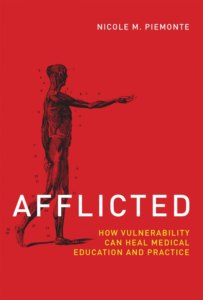
Piemonte N. Afflicted: How Vulnerability Can Heal Medical Education and Practice. Cambridge, MA: The MIT Press; 2018.
When I started my graduate studies at the Institute for the Medical Humanities, I vowed to stay away from philosophy. I had spent the previous two years as a masters-level student studying continental philosophy, and the work was rigorous, both intellectually and emotionally. I wanted to get out of my head and into the real world of healthcare and healthcare education, as it were. But, as I made my way toward a PhD and began to think more deeply and critically about human suffering, vulnerability, and mortality — and how clinicians tend to avoid such things — I couldn’t help but return to the philosophers who rallied against objective, rational, detached science and brought us back to the lived experience of being all-too-human. There was no way I could argue that contemporary medical culture’s mechanistic view of the passive, pathological body leads to feelings of alienation among both patients and clinicians without drawing on this work.
So, with the help of Friedrich Nietzsche, Soren Kierkegaard, Martin Heidegger, and Emmanuel Levinas (to name a few), I focused my studies on uncovering the reasons why patients so often feel unseen and unheard in their encounters with healthcare professionals, and why so many healthcare professionals are experiencing what we might call a crisis of meaning in their own work. I felt compelled to apply existential philosophy to the context of healthcare, since, at least in my view, healthcare is a microcosm of the human experience — birth, death, suffering, loneliness, uncertainty, pain, beauty — all there ready to behold in almost any patient encounter. And for me, the work I was doing was personal, having lost my mother to ovarian cancer in my early twenties and never quite being able to make sense of why her oncologist offered her a fourth-line chemotherapy treatment twelve hours before she died rather than having an honest discussion about what was really happening. As a result, my mom died the next morning in the hospital instead of at home, and I was left bewildered at her death that seemed so sudden when it was, in hindsight, always just around the corner.
There were times when I thought it was justified to be angry at my mother’s doctors for never having the hard conversations about death that we needed them to initiate because we were too scared to do so ourselves. But as the years passed, I began to see that there was nothing sinister going on; it was simply the case that my mother’s doctors were just as scared as we were when it came to talking about death and dying. As such, the book that emerged from my research aimed to help readers (and me) better understand this fear and to explore why healthcare education prepares students well for a career taking care of biological bodies while neglecting to teach them how to confront vulnerability or to attend to suffering that extends beyond the physical.
What I discovered was that understanding how and why this happens in healthcare education requires a look at medical epistemology — what healthcare professionals know and how they come to know it. In healthcare, the “knowable” is namely the observable and measurable (usually empirical, scientific facts), and how one comes to know those facts is through one’s observations or through measurements, lab tests, microscopy, imaging, and so forth.1 Traditional accounts of medicine are grounded in an epistemological theory of the body as an anatomical/physiological/biochemical structure that is best known and understood through the methods of science and through the impartial observations of the professional.2 Within this framework, the world is seen as something we can set our gaze upon in a predefined way in order to “discover” the definite answers we seek, and the reasons for such an approach are taken to be self-evident.3 Heidegger would say that this kind of epistemology is shaped by “calculative thinking,” 4 a kind of thinking that narrowly frames how phenomena in the world are best understood — namely, through science and scientific investigation.
For Heidegger, calculative thinking is too narrow and rigid, given its tendency to ignore that scientific answers can only ever offer partial, and often decontextualized, explanations of the world around us. In healthcare, for instance, the patient is often framed as a diseased body-object in need of medical intervention, thereby overlooking the myriad ways that an illness can affect a person and her everyday way of life. And paradoxically, a patient might expect or even desire such an approach. The way our modern world is enframed by calculative thought is so pervasive and normalized that some patients accept medicine’s objectifying gaze and consent to invasive technological interventions or believe that the body is best understood as a “machine,” seeing these approaches as the best way to identify and subsequently remedy an illness or injury.
This is not to say that such an approach to patient care is inherently wrongheaded. Indeed, part of what makes the dominant epistemology of medicine so attractive is because it works. Test results and visual images of internal pathology can offer verifiable explanations of illness and injury, and scientific research can and does lead to very real and very useful advances in clinical care. However, problems arise when both patients and practitioners start to view scientific acumen and technical skill as more important than characteristics of intuition, humility, and openness to uncertainty, as these “soft” qualities are perceived to be merely secondary or subsidiary to the “real” skills needed for patient care.
The medical trainees whom I interviewed when researching the book confirmed that their education was framed as “an applied science” and felt there was little emphasis on cultivating qualities like self-reflection and mindfulness or compassion and empathy. Indeed, when healthcare education is shaped by this epistemology, the occasional expression of the more vulnerable, human elements of patient care is likely unintelligible within the dominant discourse of medical practice that tends to drown out and even dismiss such expressions.
I was reminded of this reality recently during a reflective writing session I held with a group of residents at my hospital. One senior resident told the group about a patient he had who presented in our emergency department and was subsequently diagnosed with late-stage breast cancer and given only weeks to live. The patient was in her forties and had three sons. The oldest son had just turned eighteen the week before, and was therefore assigned as his mother’s medical decision-maker. Unsurprisingly, he and his brothers were shocked, devastated, and terrified, feelings that manifested intensely during a family meeting that the resident helped facilitate. “I felt like I was watching someone work through the five stages of grief right in front of my eyes,” the resident said. “Her son was angry, demanding answers about why we couldn’t save his mom, about why she even got sick in the first place.” The resident went on:
“Then I watched her son weep, devastated by the incoherence of it all. I realized then that this kid was asking all the questions that are constantly swirling around us in medicine that we never stop to ask. It took a teenager yelling them at me for me to realize that these are the same questions we all struggle with and never actually talk about.”
It’s moments like these that help me understand why practitioners might focus solely on the biological body and technical intervention: in the face of tragedy, it’s much easier to think about how to manage the physical care of a patient than confront the capriciousness of life and fragility of being mortal. And given that medicine frames itself as an applied science, it’s almost natural to make claims about the need for objectivity and clinical distance in order to complete the medical task at hand. The problem, however, is that patients are so much more than their biological bodies. Phenomenologists like Merleau Ponty and Heidegger, who studied human experience and described the world as we live it, point out that the body is not just a corporeal structure, but rather a lived body — a phenomenon that cannot be measured or studied like the physical body, since the lived body makes living in the world possible in the first place.5 Our lived body is that which climbs stairs, walks away, holds a child, and shakes hands. It is this lived body that allows us to “get on” in the world.
It’s precisely because we are so much more than our physical bodies that a myopic focus on the biological elements of patient care fails to see how illness and injury affect a patient’s whole life. In his moving and insightful illness narrative about his experiences of having a heart attack at age thirty-nine and a serious cancer diagnosis the following year, sociologist Arthur Frank speaks to the way that a serious illness can shatter any semblance of a coherent life trajectory. Though he points out that each individual’s interpretation of his or her illness will vary, Frank maintains that there appears to be a “common core of what critical illness does to a life.” 6 As he describes it: “Critical illness leaves no aspect of life untouched . . . Your relationships, your work, your sense of who you are and who you might become, your sense of what life is and ought not to be — these all change, and the change is terrifying.”6
When healthcare preoccupies itself primarily with the corporeal body and overlooks the various ways that patients suffer, it also overlooks the dynamic illness experience that extends beyond even the lived body. When illness strikes the lived body, which is inextricably connected to the world and how we make our way in it, our whole being is affected. As Frank puts it, “What happens when my body breaks down happens not just to that body but also to my life, which is lived in that body.”6 Given this, there is a need for healthcare professionals to attune themselves to the lived experiences of their patients and consider the ways in which illness or injury can shift patients’ worlds in unfamiliar ways.
Others have made this suggestion before, and there is much literature on the need to attend to existential suffering and the bio-psycho-social-emotional aspects of patient care. Yet, we continue to participate in a medical culture that fails to address adequately the ways that patients suffer. Why is this so? In my view, we continue to be plagued by this problem because we so often fail to acknowledge that patients’ experiences — which can often be frightening and tragic — are stark reminders of our own potential for experiencing such things. As Frank suggests, the voices of patients can be hard to hear, as they “bespeak conditions of embodiment that most of us would rather forget our own vulnerability to.”7 Indeed, the image of suffering can have a powerful effect on those who see it and can evoke within others an uncomfortable confrontation with their own mortality and potential for suffering that some would rather turn away from. Thus, reductionist understandings of illness as biological disease or an injury as a functional breakdown allow some healthcare professionals to avoid vulnerability altogether, as they package illness and suffering into discrete pathophysiological processes that might be remedied by medical science. A patient with a devastating stroke, a traumatic brain injury, or intractable pain who has lost so much of her formal self can be something that is difficult for a practitioner to emotionally hold or intellectually reconcile. For many, then, conceiving of these experiences as functional breakdowns that can be managed is much more palatable than facing the frightening uncertainty of being human.
Like my resident and his colleagues, who only faced the existential questions swirling about them after they were cried out loud in a small room, many involved in patient care would rather not dwell on our ever-present potential for death or the vulnerability of the human mind and body, and with good reason: levity and lightness are hard to come by in a world filled with such realities. And yet, I’ve too often seen the consequences of invulnerability and hardness among my medical students, residents, and clinical colleagues. In the book, I offer suggestions for how we can begin to shift the culture of medicine, an effort that I believe begins with the way we educate and train our future healthcare professionals. If we agree that we want to create a healthcare culture that cares well for patients and their families, and opens us up to broader notions of health, illness, suffering, and care, then the formation of this culture depends almost entirely on educating those who participate and learn in it. One way to do this is to make a sustained effort to help students “give up the science claim,” as Kathryn Montgomery says, which requires us to consider the way healthcare education and practice personally shape those who participate in it.8 This involves a commitment to thinking about who students are becoming on their journey toward a career in healthcare, as well as an effort to create an educational environment that holds a space for vulnerability — an environment that encourages students to reflect on their experiences with patients, on those existential questions that everyone has but no one asks out loud.
In my experience, it is the incorporation of the humanities that can create such an environment and can lead to the development of compassionate healers who think deeply and critically about their relationships to others and to the systems in which they participate. Narratives, both non-fictional and fictional, that speak to the lived experience of being a patient; reflective writing experiences that help students consider how their education is shaping them; and encounters with art, images, film, and music (among other mediums) that capture the ineffable qualities of illness, injury, and vulnerability offer students new ways of thinking and talking about healthcare.
Beyond educational interventions, there are ways that current practitioners can begin to open themselves to a kind of practice that recognizes and attends to human suffering. These changes do not have to be dramatic. Very recently, I received a thoughtful and humbling email from a physical therapist practicing on the other side of the country who had read the book and even shared it with a few of his colleagues. He was kind enough to not point out my rather narrow focus on physicians and medical students in my analysis, discussing instead his ability to draw his own parallels to rehabilitation practice and education and to his own interest in the philosophy of pain. In talking with him, I’ve come to understand that it is not uncommon to hear the “body as machine” metaphor in rehabilitation education. But, I also got the sense that notions about the “lived body” and the ways that illness and injury intrude into the everyday lives of patients (even at the basic level of dysfunction) is something therapists know rather intuitively —and they don’t need any philosopher to explain why this is so. The foundational tenants of occupational therapy, for instance, assume that people find meaning in their occupations or engagements in everyday living, that identities can be reconstructed after serious illness and injury, and that the mind and body (and the person and environment) are inextricably bound up together.9 The occupational therapist’s role, as Adolf Meyer wrote in “The Philosophy of Occupation Therapy” in 1922, “consists in giving opportunities rather than prescriptions.”10 As such, it seems to me that professionals in fields like occupational, physical, and speech therapy understand the lived reality of patients who have experienced something like devastating stroke better than many physicians in the hospital, who see these patients rather infrequently after discharge. This is why the Journal of Humanities in Rehabilitation is so important; in promoting the humanities in rehabilitation practice and education, it encourages deeper learning and approaches to care, and it helps bring to surface so much of the wisdom that is inherent to rehabilitation that others outside the field might take for granted.
As I’ve begun to think of the more practical aspects of my research, as well as its connection to rehabilitation, I’ve come to see that making even small changes, “micro-adjustments,” in work and teaching can begin to address the kind of suffering that extends beyond the physical body. The physical therapist I was talking to, for example, explained to me how he plans to encourage his students to reflect on their experiences with patients, as well as the epistemological assumptions that might be shaping their perspective of rehabilitation. He also described how he is trying to be more present with patients, trading a computer for a small notebook for instance, and thinking more critically about the way he educates his patients —helping them to see their experience together as a facilitation or guidance through rehabilitation, rather than an attempt to “fix” or “cure” chronic pain or mobility issues.
The idea of being more present with patients, about trying to recognize what it might be like to be someone with a serious illness or injury, is an important one. I’m not a patient with a critical medical issue and have never been one, but I have been a caregiver to both my parents before they died. What always struck me, as I spent countless hours in hospital rooms with my mom, and then again with my dad a few years later, was the strange juxtaposition between our world — our terrifying, disorienting, and lonely world in the hospital room — and the world around us outside the door: the bustling doctors, nurses, therapists, students and techs, busy with their tasks, flitting in and out of our room. Their daily life was so different from ours. Like the great American writer Anatole Broyard said after receiving his cancer diagnosis, “To most physicians my illness is a routine incident in their rounds, while for me it’s the crisis of my life. I would feel better if I had a doctor who, at least, perceived this incongruity.”
I can say that there were many times that it felt like my family and I were simply items on our caregivers’ to-do lists — and understandably so. Healthcare professionals are incredibly busy and have seemingly infinite demands on their time. But, I can also say that there were moments when we were shown unspeakable compassion and care. There were times when our caregivers seemed to genuinely recognize that when they walked into our room, they were also able to walk right back out, into a world that was more coherent, less blighted with panic and fear. They recognized how strange that felt.
It seems to me that maybe all health professionals need in order to become “more empathic” is the ability to recognize the incongruity between their days, with their long do-to lists, and the days of their patients, people who might be having the crisis of their lives. All they have to do is recognize that incongruity. Compassion will take over from there.
To purchase Afflicted: How Vulnerability Can Heal Medical Education and Practice, go to Amazon at this link: https://www.amazon.com/Afflicted-Vulnerability-Education-Practice-Bioethics/dp/0262037394
Acknowledgements
The author would like to thank Michael Amato, DPT and Charlie Wilson, MOT, OTR/L for their insightful feedback on this piece.
References
- Montgomery K. How Doctors Think: Clinical Judgment and the Practice of Medicine. New York, NY: Oxford University Press; 2005.
- Komesaroff P. The Many Faces of the Clinic: A Levinasian View. In: Toombs, S.K., ed. Handbook of Phenomenology and Medicine. Dordrecht, NL: Kluwer Academic Publishers; 2001. 317.
- Heidegger M. The Question Concerning Technology. In: Lovitt W, trans. The Question Concerning Technology, and Other Essays. New York, NY: Harper & Row; 1977. 24.
- Heidegger M. Memorial address. In: Anderson J, and Freund EH, trans. Discourse on Thinking. New York, NY: Harper & Row; 1969.
- Merleau-Ponty M. Phenomenology of Perception. New York, NY: Routledge; 2002.
- Frank AW. At the Will of the Body: Reflections on Illness. New York, NY: Houghton Mifflin; 1991. 6.
- Frank AW. The Wounded Storyteller: Body, Illness, and Ethics. Chicago, IL: University of Chicago Press; 1997. 84.
- Montgomery K. How Doctors Think: Clinical Judgment and the Practice of Medicine. New York, NY: Oxford University Press; 2005.
- Kielhofner G. Conceptual Foundations of Occupational Therapy Practice. Philadelphia, PA: F.A. Davis; 2009. 26-27.
- Meyer A. The Philosophy of Occupation Therapy. American Journal of Physical Medicine and Rehabilitation. 1922; 1: 7.


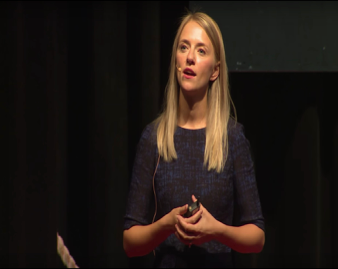
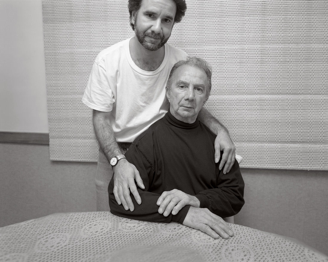
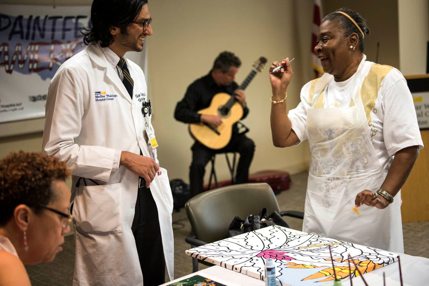
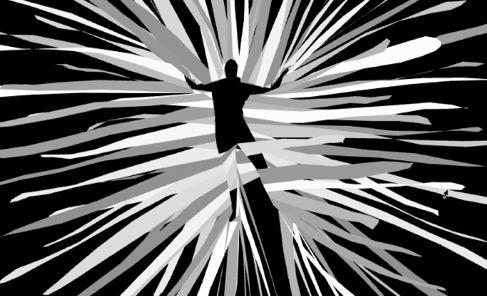

 Member since 2019 | JM14274
Member since 2019 | JM14274


NO COMMENT